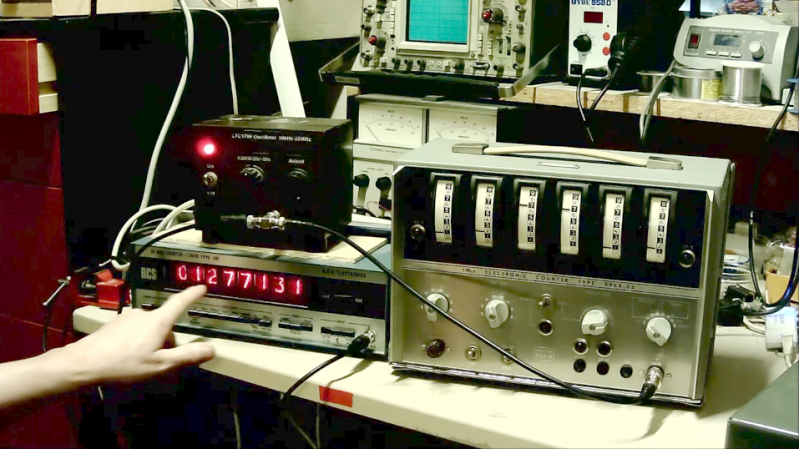With regard to retro test gear, one’s thoughts tend to those Nixie-adorned instruments of yore, or the boat-anchor oscilloscopes that came with their own carts simply because there was no other way to move the things. But there were other looks for test gear back in the day, as this frequency counter with a readout using moving-coil meters shows.
We have to admit to never seeing anything like [Charles Ouweland]’s Van Der Heem 9908 electronic counter before. The Netherlands-based company, which was later acquired by Philips, built this six-digit, 1-MHz counter sometime in the 1950s. The display uses six separate edge-mounted panel meters numbered 0 through 9 to show the frequency of the incoming signal. The video below has a demo of what the instrument can do; we don’t know if it was restored at some point, but it still works and it’s actually pretty accurate. Later in the video, he gives a tour of the insides, which is the real treat — the case opens like a briefcase and contains over 20 separate PCBs with a bunch of germanium transistors, all stitched together with point-to-point wiring.
We appreciate the look inside this unique piece of test equipment history. It almost seems like something that would have been on the bench while this Apollo-era IO tester was being prototyped.
















It’s a digital frequency counter, as accurate as the time base is.
This isn’t a “frequency meter” where pulses are accumulated. It’s a digital counter using analog meters for readouts. The meters only have to show 0-9, ten discrete steps. Instead of a bcd to Nixie or 7segment decoder, there are four resistors that summed together give tye voltage readout.
As I’ve said before, it was definitely a thing, though I don’t know how common. Fifty years ago, right before LED readouts got cheap, you could get cheap analog meters on the surplus market, intended for things like signal strength in radios. It beat 4 lights, 1-2-4-8, where you had to add them up yourself.
I don’t think there were many around. I’ve never seen another one or anything similar. Mine has serial number 464 and if you Google it, you won’t find much info about it. This machine came out in 1958 or 1959 and a few years later they sold an attachment box for it, the 9917, which is a nixie tube readout unit.
I knew or assumed the idea was used in commercial equipment but it was a vague thing.
But, a 1971 hobby book from RCA had a digital clock where they suggested tge technique. And it was definitely suggested in a magazine article.
The first meter I ever had was a surplus tuning meter, I think 99cents in 1971. A few years later, the local surplus store was loaded with them. But by 1974, I got my first 7segment LED readouts, and they were cheap enough.
OK, cool meter, good video, but am I the only one that’s a little suspicious of the fact that he has half a skeleton hanging from the ceiling of his “lab”
Yeah, that’s my dad, in this way he’s still with me after all those years (just kidding – it came out of a school and it’s plasti)
B^)
A few brightly colored oversized switches and it’d look like an original Star Trek prop. Nice!